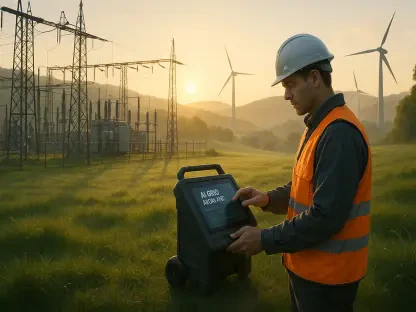The rise of electric vehicle (EV) adoption is having profound effects on global oil demand, significantly altering the dynamics of the tanker market. This shift is particularly evident in the major regions of China, the United States, and Europe, each exhibiting unique trends and challenges. The changing landscape of oil consumption and the transportation of crude oil are central to understanding this transformation.
EV Trends in China
Rapid Expansion and Market Dominance
China has emerged as a dominant force in the global EV market, leading with rapid expansion. The nation’s focus on battery electric vehicles (BEVs) is noteworthy, facilitated by robust government policies and substantial investments in charging infrastructure. As a result, China accounted for approximately two-thirds of global EV sales in the current year. This dominance is a direct consequence of strategic initiatives aimed at reducing dependence on fossil fuels and curbing environmental pollution.
The widespread adoption of BEVs in China has led to a notable reduction in road transport oil demand, with a decline observed in the past year. The shift towards electric transportation is further complemented by the adoption of natural gas-powered trucks, reinforcing the nation’s commitment to alternative energy sources. However, the growth in BEV sales has shown signs of deceleration, with plug-in hybrid electric vehicles (PHEVs) increasingly capturing a larger market share. This trend indicates a diversification in consumer preferences and the evolving nature of the EV market in China.
Impact on Oil Demand and Transportation
The surge in EV adoption in China has had significant repercussions for the tanker market, particularly in the transportation of crude oil. The demand for seaborne crude imports has been impacted, reflecting the reduced domestic oil transport demand. As China’s EV market continues to expand, the reliance on traditional oil imports is expected to wane further. This scenario poses challenges for the global tanker market, which must adapt to the changing demand dynamics and explore new opportunities for growth.
Given the scale of EV adoption in China, the tanker market must anticipate and respond to these emerging trends. Innovative strategies and adaptive measures will be crucial in navigating the shifting landscape of oil demand. The emphasis on alternative energy sources and the decline in fossil fuel consumption necessitate a reevaluation of conventional transportation models, underscoring the need for forward-thinking solutions in the tanker industry.
EV Adoption in the United States
Federal Incentives and Market Growth
The United States has made significant strides in EV adoption, propelled by federal incentives and legislative measures. The Infrastructure Investment and Jobs Act, enacted in 2021, alongside the Inflation Reduction Act of 2022, has provided substantial support for the EV market. These initiatives have facilitated the development of charging infrastructure and offered financial incentives to consumers, fostering a conducive environment for EV adoption.
Despite these efforts, the growth of EV sales in the United States remains relatively modest compared to China’s market dominance. Political factors have contributed to challenges in the EV sector, including an executive order from the previous administration that halted targets for EV sales and froze funds for infrastructure development. This intervention has created uncertainty regarding future growth rates and the overall trajectory of EV adoption.
Political Challenges and Future Prospects
The political landscape in the United States continues to play a pivotal role in shaping the future of EV adoption. The inconsistency in policy direction has led to fluctuations in market growth, affecting consumer confidence and industry investments. The current administration must navigate these challenges by reaffirming commitments to EV targets and ensuring a stable regulatory environment to promote sustained growth.
Looking ahead, the potential for increased EV adoption in the United States remains contingent upon resolving political uncertainties and enhancing infrastructure capabilities. Future prospects hinge on the ability to reconcile differing policy stances and create a unified framework for advancing the EV market. The interplay between government actions and market responses will be critical in determining the pace and extent of EV integration into the transportation landscape.
Europe’s Shifting EV Market
Economic Factors and Consumer Confidence
Europe’s EV market has experienced a noticeable shift, with a decline in BEV and PHEV sales observed in the past year. Contributing factors include the phase-out of subsidies, weak consumer confidence, and high costs associated with EVs. The reduction in financial incentives has particularly impacted consumer purchasing behavior, reflecting the sensitivity of the market to economic fluctuations.
The decline in consumer confidence has further compounded the challenges faced by the European EV market. The economic landscape, marked by uncertainties and varying levels of disposable income, has influenced purchasing decisions and affected the overall growth of the EV sector. The high upfront costs of EVs and the perceived lack of value for money compared to traditional vehicles have deterred potential buyers, slowing the market’s expansion.
Regulatory Uncertainty and Infrastructure Limitations
Regulatory uncertainties have also surfaced, particularly with Germany’s push for exemptions to the European Union’s zero-emissions target for new passenger cars by 2035. This has raised concerns about potential delays or amendments to the established targets, creating a sense of instability in the regulatory framework. The inconsistency in policy direction has further hindered the market’s growth, affecting both industry stakeholders and consumers.
Infrastructure limitations present another significant challenge for Europe’s EV market. The development of a comprehensive and reliable charging network remains a critical factor for sustained growth. As EV adoption increases, the demand for accessible and efficient charging solutions intensifies, necessitating significant investments and coordinated efforts to bridge the infrastructure gap. Addressing these limitations is essential for fostering consumer confidence and ensuring the viability of the EV market in Europe.
Conclusion: Future Considerations for the Tanker Market
The growing adoption of electric vehicles (EVs) is dramatically impacting global oil demand, leading to significant changes in the tanker market. China, the United States, and Europe are the primary regions where this effect is most pronounced, each demonstrating its own set of unique trends and challenges. As more consumers in these areas switch to EVs, oil consumption patterns are changing drastically. Understanding this shift is crucial, as it directly affects the transportation of crude oil and the broader dynamics of the oil market. For instance, in China, the government’s strong push for EV adoption is reducing its oil import needs. In the United States, a mix of policy incentives and increasing consumer awareness is driving EV sales. Meanwhile, Europe is experiencing a similar trend, marked by stringent emissions regulations and growing environmental consciousness. These shifts necessitate a reevaluation of the tanker market, highlighting the importance of adapting to a future where oil demand could be significantly lower.









